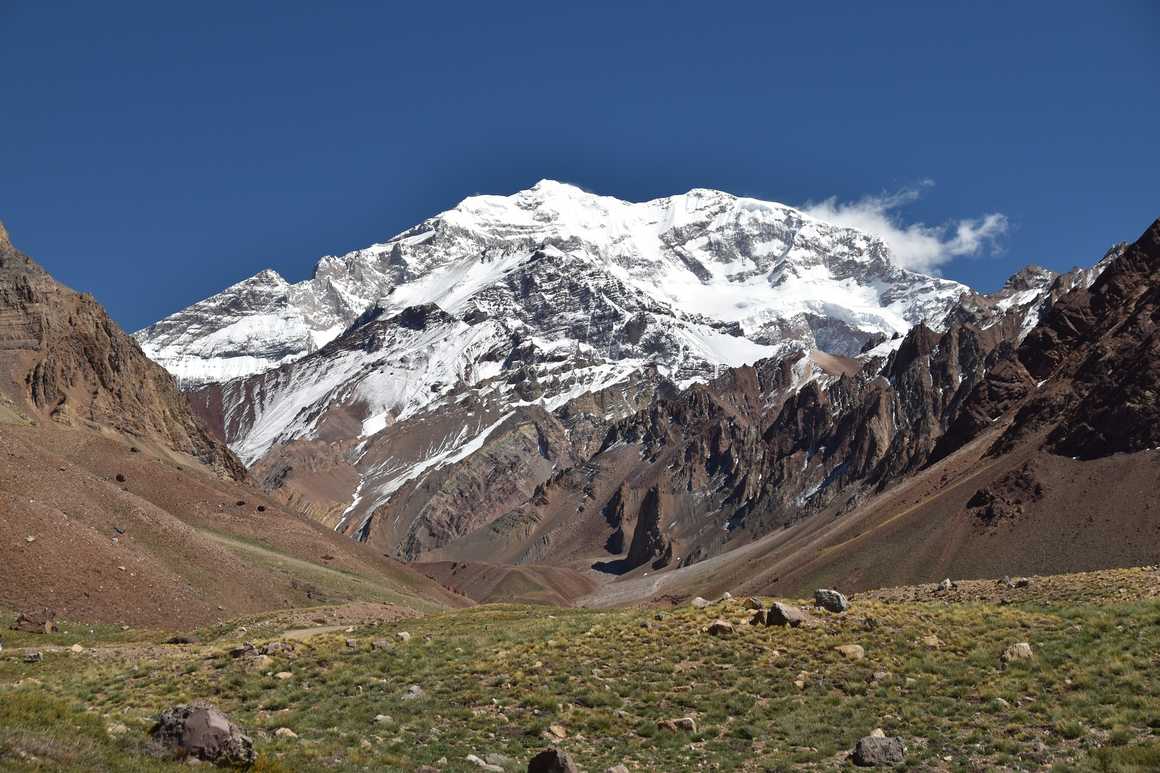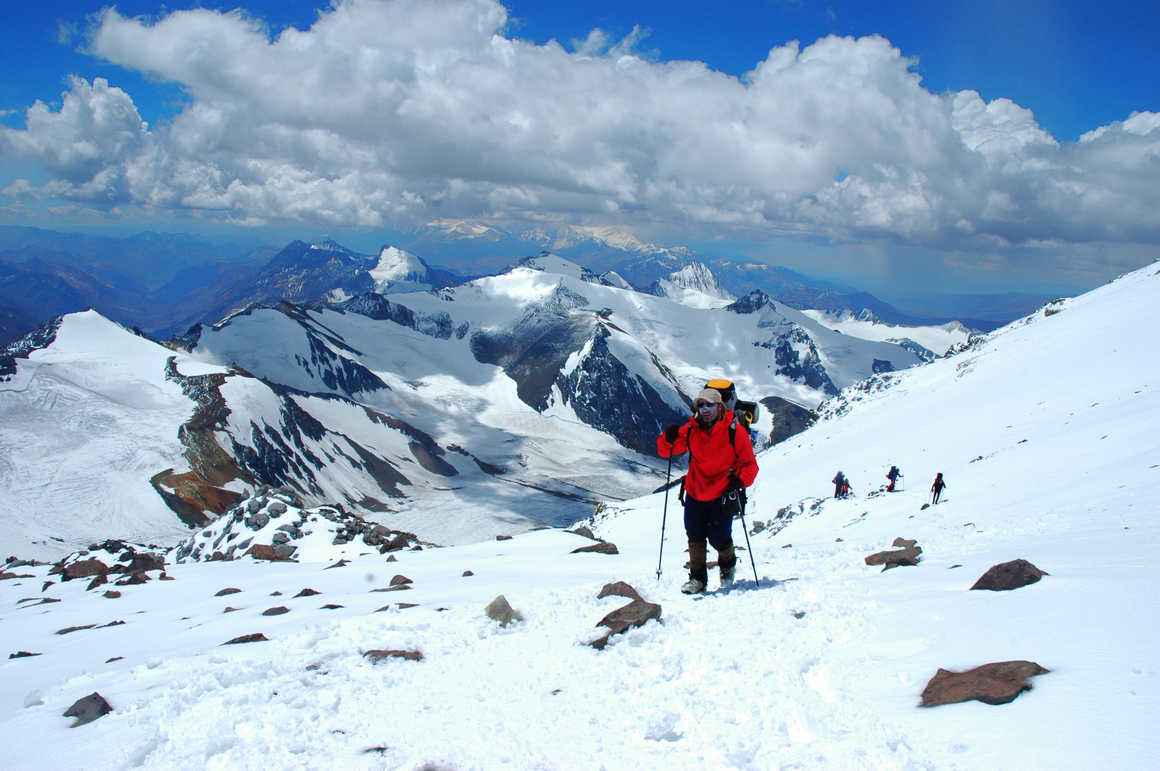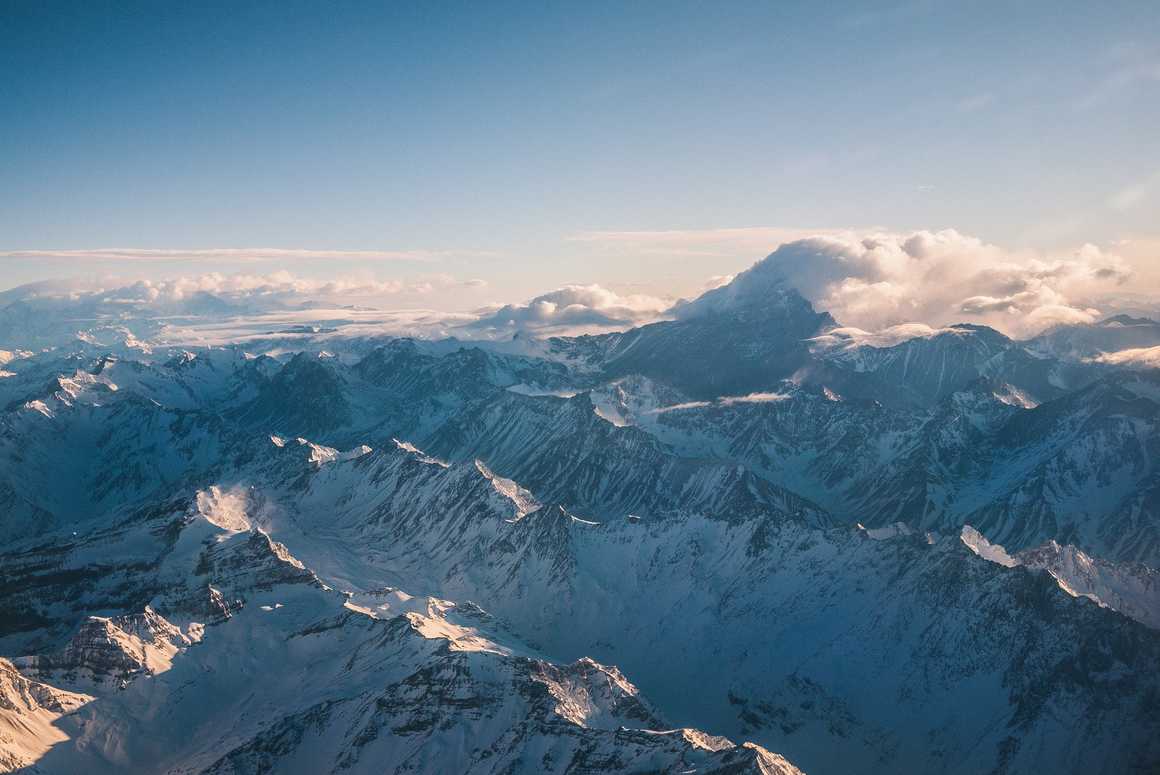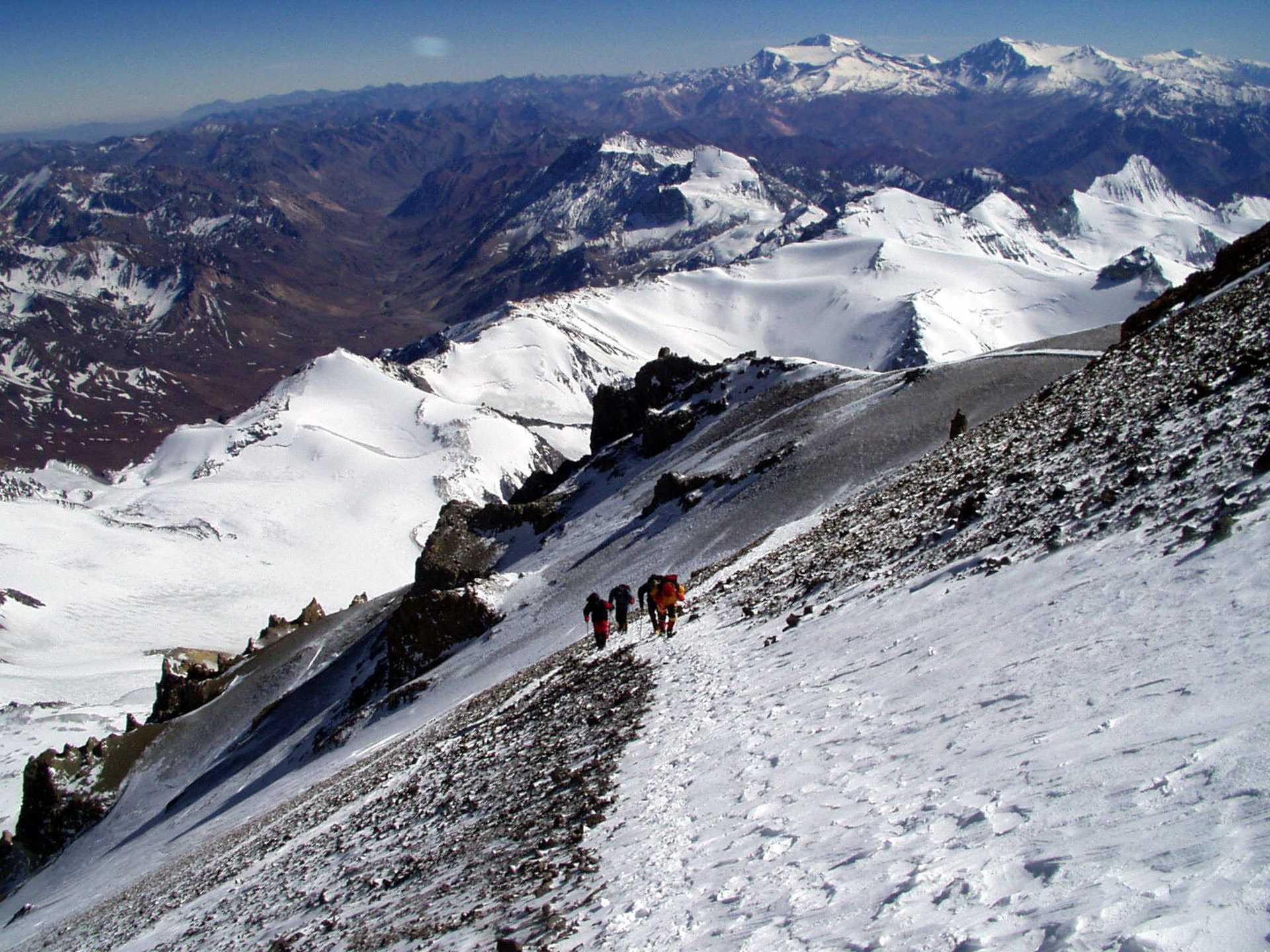Located in Mendoza (a gorgeous part of Argentina, famed for its red wine) Aconcagua’s claim to fame is that it has the highest summit outside of the Himalayas. It’s also absolutely ace to climb in the Andes. Question is: are you up to it?
Aconcagua is not a piece of cake!

The good news is that – depending on the route you take - you don’t really need any technical climbing skills in order to tackle it successfully. Is it tough? Yes: if you found Kilimanjaro a real slog, you have to face the fact that Aconcagua is in a different league when it comes to testing your stamina and commitment. Have faith; an Andean adventure is well worth the effort. Don’t forget, if you make the summit of Aconcagua you can justifiably brag that you’ve reached the top of the highest mountain in the southern and the western hemisphere. On a slight tangent, if you haven’t climbed Kilimanjaro, you might want to consider an African adventure instead before tackling this beast. We use the term ‘beast’ advisedly; the ‘stone sentinel’ (that’s what Aconcagua means in Inca-speak) stands a whopping 6,962 metres high. If that wasn’t enough, it’s fair to say that the mountain’s weather is not always the friendliest and is prone to more extreme swings than a drunken golfer. And don’t get us started about the winds…
But as with any mountain trek, all of these challenges can be overcome if you concentrate on three things: the right preparation, the right gear for the conditions, and the right guides to see you safely up to the summit. Stick at it and you’ll be rewarded not only with a mahoosive sense of pride and achievement for being so great, but also the most spectacular views of the surrounding Andes below you, whose peaks can’t quite match up to the one that you’ve just conquered. Right now, you’re some kinda trekking hero.
But just how difficult is it to climb Aconcagua?
OK. It’s difficult. 95% of folk who attempt Aconcagua follow what is known as the ‘Normal Route’. That’s the one we recommend, but don’t be fooled into thinking ‘normal’ means ‘regular’ or ‘straightforward’ here. Just because it’s not considered technical doesn’t mean you won’t be resorting to ice axes and crampons occasionally. And that’s not all; you’re looking at an extreme high-altitude trek of fifteen days or more on challenging mountain terrain of varying steepness, and in weather conditions that can change faster than a politician’s promises.

It’s a long, physically and mentally demanding haul to the summit, but there are some plus points in favour of taking the Normal Route. Firstly, you don’t need to be a rope-savvy mega-mountaineer to get to the top; though obviously the more high altitude trekking experience you have, and the fitter you are, the better. Secondly, it’s the safest route; ‘nuff said. And thirdly, the overnight camps are spaced out in such a way that the effort required to make it successfully to the top (and back again, obviously) is evenly loaded across the trek. Believe us, that’s a boon because you are going to be tired. Oh, and another thing, the Normal Route also offers the quickest exit from the mountain so you can be back in Mendoza, swigging a decent Malbec and swapping stories in just a couple of days. Just in case you were wondering, the other 5% who climb Aconcagua but don’t follow the Normal Route are rock-hard, Kryptonite-munching mega-mountaineers with ropes and everything. They take more difficult/dangerous routes that require proper technical skills. Good for them. We’ll leave them to it.
Getting ready to climb Aconcagua
If you’ve done other high-altitude treks, you’ll already have a fair idea of the kind of preparation that’s going to be needed to make the climb to Aconcagua’s summit. If you’re new to all this, however, we’d suggest you set your sights a little lower - Aconcagua is a bit too tough for beginners.

You’re going to need to be in great shape to meet the physical demands of Aconcagua and should probably start building your strength and fitness at least four months before you set foot in Argentina. Eating three shredded wheat for breakfast and jogging around the park once a day isn’t going to hack it; you should factor in as much hill or mountain training as you can, build your core muscle strength, add regular aerobic and anaerobic workout sessions to your routine for cardiovascular fitness and aim to increase your joint flexibility. Now, there’s no need to go at all this like some kind of fitness loony; that’s why we suggest you build your fitness over a number of months. Try to do too much too soon and you risk injuring yourself.
Once you find yourself in the foothills of the Andes, you’re going to realise the benefit of that cardiovascular training. We’re high up, and the air is thin here, right? As with any mountain trek, altitude sickness presents a potential problem. A good level of cardio fitness is part of the solution, and so is a spot of acclimatization. Chill for a few days. Get used to that slight shortness of breath and the fact that you’re tiring that bit quicker after walking anywhere. Pre-trek, it’s a good idea to cut out the booze and avoid any hard physical exertion; just let your body get used to the high altitude conditions in its own sweet time. There are various medications you can take to combat any symptoms associated with altitude sickness – painkillers for headaches, anti-nausea tablets and so on. But here’s the important bit: one of the top causes for failing to complete an Aconcagua trek is ignorance of the worsening symptoms of altitude sickness. No joke – this is a serious condition; altitude sickness can affect anyone and if you’re feeling bad, persistence is dangerous. You’ve gotta get off the mountain. Sad, we know, but not nearly as sad as the potential consequences if you try to carry on. Anyhoo… let’s move on.
How difficult is it to climb Aconcagua? In summary
So here it is in a nutshell. Is it difficult to climb Aconcagua? Yes, but it’s definitely do-able. Maybe not as a first time high-altitude trek, but if you’ve got a bit of experience behind you, you’re physically fit and you like a decent challenge you’re definitely on our wavelength. Get ready for tiring slogs, freezing nights and gobsmacking scenery. Get ready for the highest summit outside Asia, and get ready for one of the most thrilling, exhilarating and pub braggable (is that even a word?) experiences of your entire life. Aconcagua is waiting for you. Go get it.










